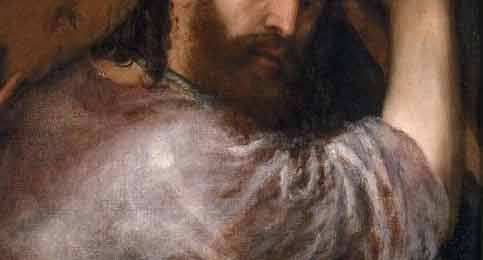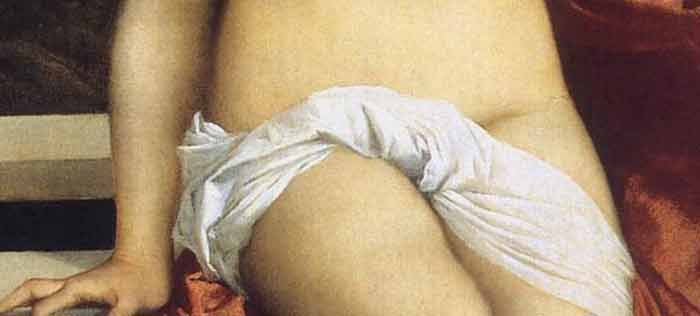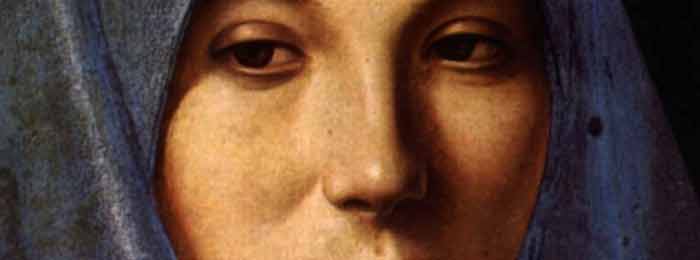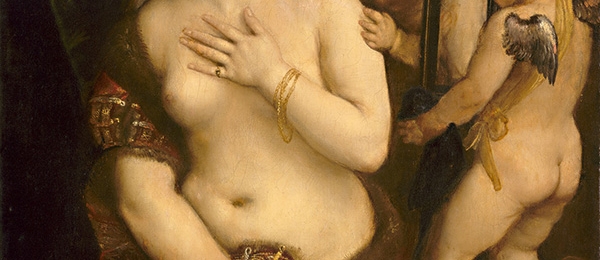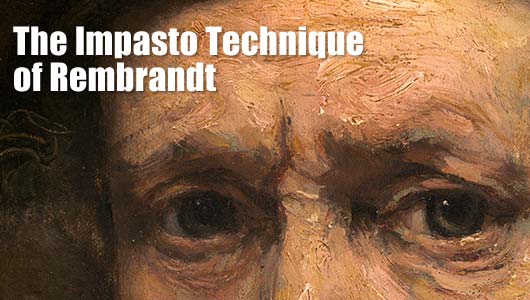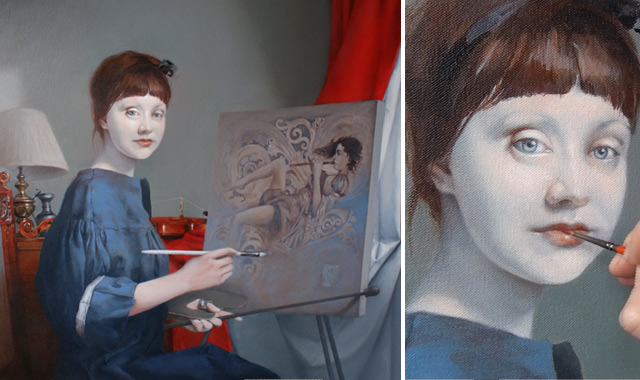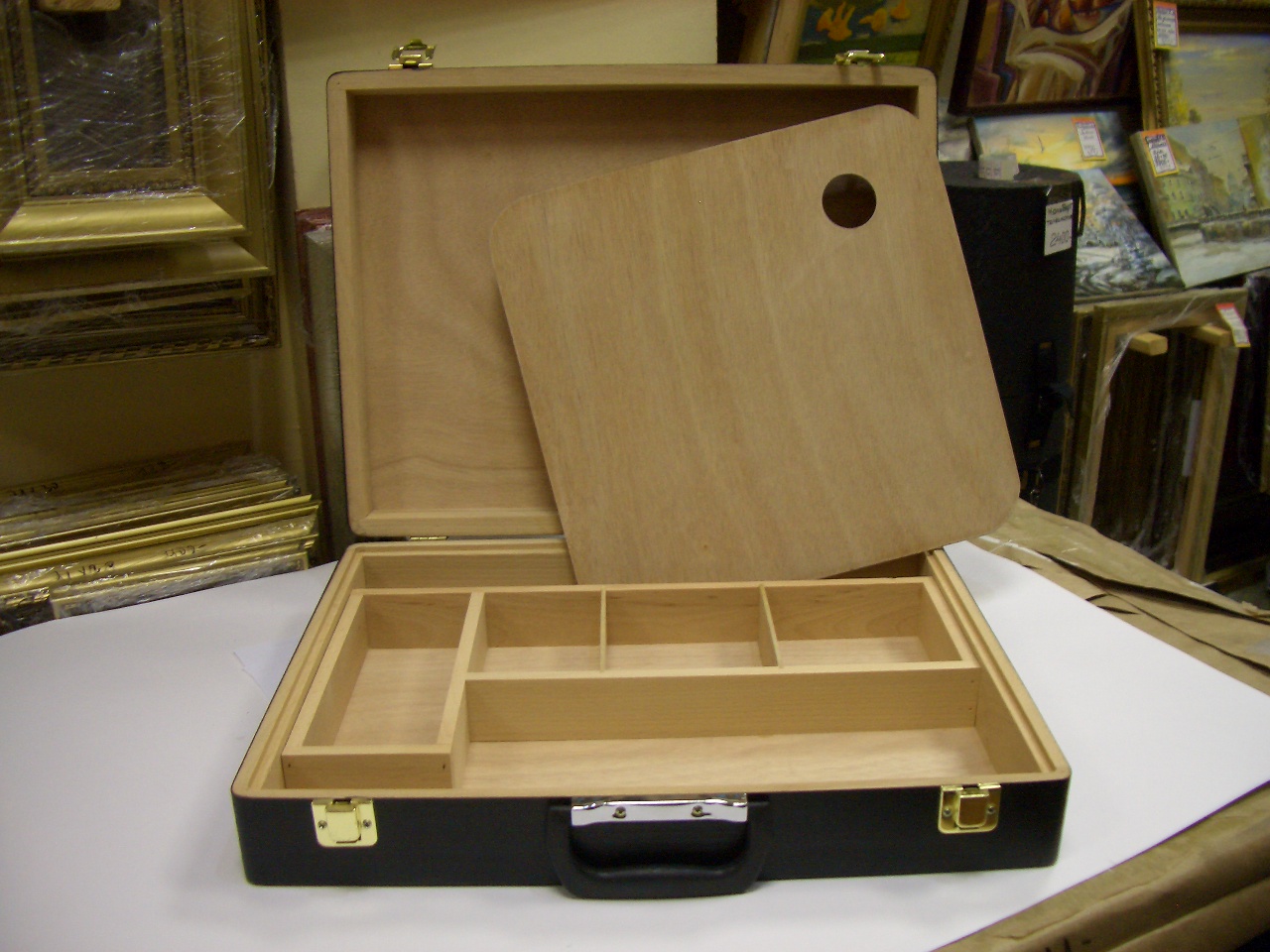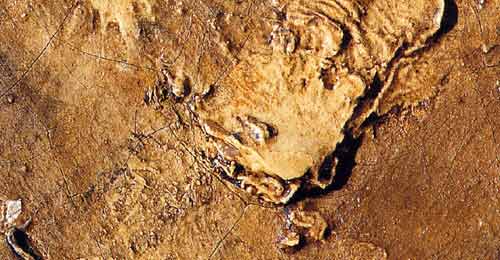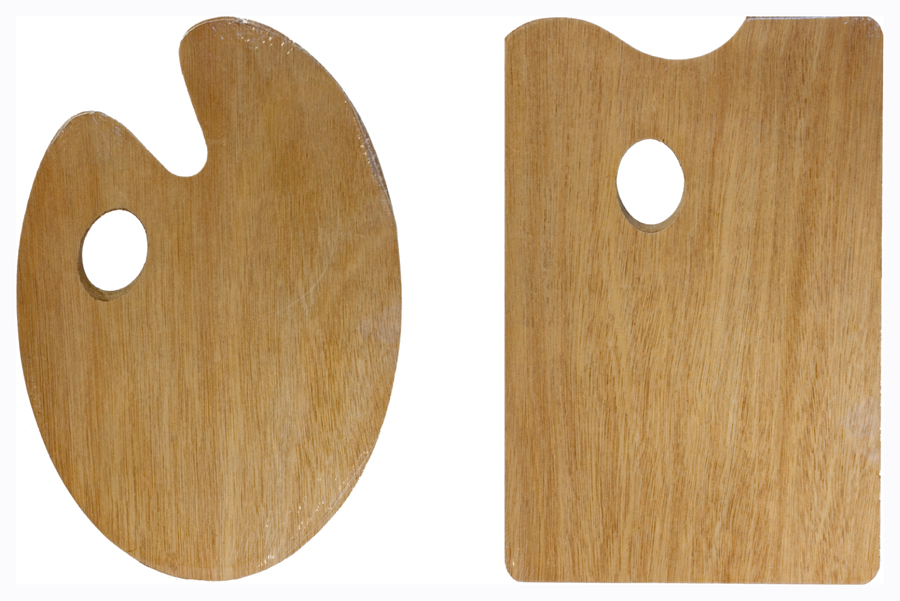On 1 Jul, 2014 With
“Glazing” in relation to the Venetian Method refers to the application of a darker transparent paint over a lighter area. Doing so causes light rays to pass through a transparent darker layer, bouncing off the lighter surface underneath, then returning to the viewer’s eyes, and was useful in creating subtle optical illusions. Only the Renaissance practice of glazing can produce this particular effect, one which results in the look of a warm glow and more saturated colours than the same pigment could achieve if applied more thickly and opaquely. Modern methods, with their more opaque results, lose a sense of distance when one is looking at shadows. Rembrandt’s glowing and rich dark browns owe their origins to this Venetian…
Read More
On 24 Jun, 2014 With
Titian and Giorgione were foremost among the pioneers of what we now call the Venetian Method of oil painting. The Venetian Method, or Venetian Technique, borrowed heavily from the Flemish Method, which saw the application of transparent glazes for the shadows, greater contrast between dark and light areas, and opaque highlights. The Venetian Method, however, deviates in some key areas, adding its own take on the Flemish process. While the glossy finish of the Flemish Method was ideal for small wood panels, on large paintings it was distracting and decidedly “overkill”; ergo, Titian refined the painting process to produce a less reflective surface. Most probably, he cut out sheen-enhancers like polymerized oils, balsams, and resins, and replaced them with…
Read More
On 17 Jun, 2014 With
Oil painting in its first form evolved from an earlier discipline known as , and was an attempt to overcome the severe limitations of that medium, such as a lacklustre finish and too-rapid drying time. Developed originally in Flanders, the method became known as the “Flemish Technique.” This method of painting requires a rigid surface on which to work, one that has been primed pure white, as well as a very precise line drawing. The line drawing was transferred to the white surface by perforating (tracing, in essence) the drawing along its lines. Once this transfer was complete, the resulting lines were enhanced with ink or viscous paint (using either a pen or finely pointed sable brush). The drawing was…
Read More
On 10 Jun, 2014 With
Modern painting methods are far more rapid and direct than those used by the “old masters,” and as such, make replicating the works of these great artists a challenge, even when we render each colour and tone as closely as seems possible. The transparency and luminosity that was created by the heavily layered techniques of the old masters is found lacking regardless of one’s efforts to recreate colour and tone. This mysterious challenge invariably proves very frustrating when attempting to copy Renaissance art, with our current methods always producing something that appears heavy and overly opaque by contrast. Some have attributed the wondrous lustre and more translucent look of the old masters’ work to time, but that is not…
Read More
On 24 Jun, 2013 With
Creating Impastos in Oil Paintings The simplest way to create an impasto surface is to apply paint in large amounts, usually with either a brush or palette knife. Commercial oil colors have a heavy consistency, so this can be achieved by working directly from the tube applying the colors in thick layers. Opacity and built-up texture are usually interrelated, with much of the thickest impasto consisting of solid and opaque pigments, such as lead white or titanium white. Passages of thickly applied paint can also be translucent, so extender pigments are chosen that supply both bulk and transparency. The Impasto Technique of Rembrandt Impasto is paint laid on a canvas or panel in quantities that make it stand out from…
Read More
On 3 Jun, 2013 With
Web Art Academy This course offers Fine Art Video Lessons that reveal classical oil painting and drawing techniques. It contains 12 high-definition multi-part video lessons that show the process of oil painting and drawing, step by step. In the Web Art Academy Club you will discover full process of artworks creation by watching the artist in action. It’s as good as sitting next to the fine artist in real life. The course is run over a period of six months, presenting two new videos every month. In addition, as a member of the Web Art Academy Club, you will also get free bonuses – four downloadable Fine Art Books every month – 24 books in total! » Get Your Exclusive…
Read More
On 28 May, 2013 With
Oil painting lessons and techniques: Materials It remains to speak of those tools which are not essentials, but conveniences, to painting. Even as conveniences, however, they are of importance enough to have an influence on your work. You can paint without them, but you will work more easily for the having of them; and something of the sort, although not necessarily of the same kind, you must have. You may improvise something, in other words, to take the place of these, but you would be wiser to get those which are made for the purpose. The Box.—First, the box for oil paints. You must keep your things together somehow, and it would be as well that you keep them in…
Read More
On 26 May, 2013 With
Oil painting lessons and techniques: PALETTES Cleanliness —The cleanliness of a palette consists in its being always in such a condition that you can handle it without getting dirty; that the mixing-surface will not foul the freshly mixed paint; and that the paint around the edge is always so that you can pick up a fresh, clean brushful. If you try to clean off all your color every day and polish your palette nicely, you will not only take up more time with your palette than you do with your painting, but the fact that some left-over paint may be wasted will make you a little stingy in putting on fresh paint, which is one of the worst habits…
Read More
On 4 Nov, 2012 With
The Most Expensive Pieces of Art We all know a picture is worth a thousand words, but how much is that in actual cash? Ultimately, a painting is worth whatever someone is willing to pay for it. Still, if the piece has historical, cultural or critical importance, the value of a painting will skyrocket. Auctioneers and art valuers use several criteria to determine exactly how desirable a piece ought to be. They look at the condition of the piece and its sales history. They compare it to the value of other works sold by the same artist and to other similar works done by different artists in the genre. They then look at the subject matter and compare that with…
Read More
On 1 Oct, 2012 With
Oil painting materials and techniques: PALETTES The most important qualities in a palette are that it should be large enough, and that it should balance well on the thumb. Whether it is round or square is a slight matter. The oval palette is usually best for the studio because the corners are seldom of use, and add weight. But for sketching, the square palette fits the box best. Get a palette much larger than you think you want. When you get it on your thumb the mixing-surface is much less than there seemed to be before it was set, for all the actual surface is between the row of colors and the thumb. If the palette…
Read More


